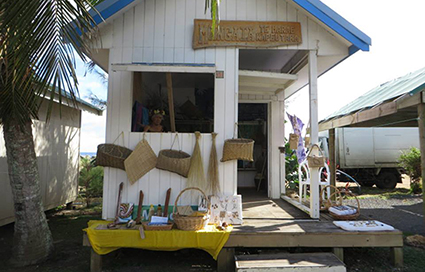
The poverty line of US$1.25 per day is far less than is needed to maintain 'minimum welfare' in the Asia-Pacfic region, where two-thirds of the world's poorest people reside. Asia-Pacific Journalism's Lucas Dahlström reports.
Two thirds of the world’s deprived people in terms of poverty, hunger and lack of sanitation live in in Asia-Pacific, according to the United Nations Development Programme (UNDP).
And with living costs rising faster than the general price level, there is a need to change the poverty measurements in the region, says the Asian Development Bank (ADB).
Both UNDP and the ADB hosted a recent symposium “Poverty in Asia – a deeper look” which brought together thinkers and practitioners from leading institutions fighting poverty to discuss how to best measure and analyse data to make policy more effective.
At the symposium, the ADB’s chief economist, Shang-Jin Wei, said that the US$1.25 poverty line is not adequate to measure the absolute minimum standard of living needed to survive. Instead the ADB wants the regional poverty line to be raised to US$1.51, which will place an additional 343 million people in poverty .
”The amount of $1.25 a day is not enough to maintain minimum welfare in many parts of our region. A fuller understanding of poverty is needed to help policymakers develop effective approaches to address this daunting challenge,” says Wei.
The poverty line is the minimum level of adequate income in a particular country or region. This means that people living under this line do not have sufficient funds to meet their daily needs and the needs of their family.
Helping to understand
“All improvements on the current measures would be of value if it results in a better understanding of the realities of the Pacific people’s lives in the Pacific,” says Rachel Le Mesurier, executive director of Oxfam in New Zealand.
Oxfam is a world-wide development and charity organisation that tries to mobilise the power of people against poverty.
Le Mesurier underlined that the data, however, needs to be current and accurate.
”And for many of the Pacific nations this is not feasible.”
If the people that live on less than US$1.51 a day should be taken into account when measuring poverty in the Asia-Pacific, the number of people living in poverty would be three times larger than what’s currently estimated.
‘Separate data’
The director of UNDP’s Bureau for Asia and the Pacific, Hoaling Xu, said at the symposium that the poverty in the Asia-Pacific region was falling, no matter which definition of poverty we use. Le Mesurier from Oxfam is not as positive.
“The Pacific data needs to be separated from the Asian data – they are not comparing taro with taro. Climate change is affecting the Pacific small island/large ocean developing states in very significant ways that are and will have increasing negative impact on poverty,” says Le Measurier.
Many poor people in Pacific countries are struggling with high food prices. The reason behind this is found in climate change, says the Oxfam executive director.
”Many are struggling with the need for a consistent, secure and reliable supply of nutritious, fresh and cheap food. Increasingly, it is hard to ensure a steady supply of food from what people can grow or fish, as climate change impacts their traditional agriculture and fishing practices,” she says.
Big neighbours
Le Measurier says the Pacific island leaders are joining forces to raise their concerns about climate change, but they need their bigger neighbours to support their calls.
”One of the challenges for both New Zealand and Australia is to ensure their focus on Aid for Trade policies in overseas development does result in improved economic and social outcomes for the most vulnerable people, particularly women and children. Providing assistance to small farming and fishing cooperatives is one way to ensure the economic changes lift the lives of those at the very bottom,” she says.
But average Kiwis also need to show their support in the fight against poverty in the Pacific
”Two things can be done by Kiwis – firstly, show support and donations for livelyhood programmes, that need public donations to help enable and empower local and small communities in the Pacific to build their own economic sustainability,” says Le Measurier.
”Also, contact your local MP to ask how the government’s New Zealand Aid Programme will reach those who are most vulnerable to poverty.”
Hunger target
According to ADB, Papua New Guinea is one of four countries, – Armenia, Timor –Leste and Vanuatu are also on the list – that have not progressed towards the hunger target in their latest research.
The target is to reduce the number of underweight children under 5 years of age. Instead, the number of children that are underweight have grown in the country.
The under-5 mortality rate in PNG is 75 per 1000 live births. In New Zealand, for example, the rate is 6 per 1000 live births.
Even though the numbers do not look good for Papua New Guina, and many other Pacific countries, Oxfam still sees a positive future for the whole region – if the world reacts in time.
”There are crossroads ahead for the Pacific where the future could be much better, or much worse. The key to this will be the world’s response to climate change at the global climate change conference in Paris in December 2015,” says Le Measurier.
This work is licensed under a Creative Commons Attribution-NonCommercial 3.0 New Zealand Licence.



